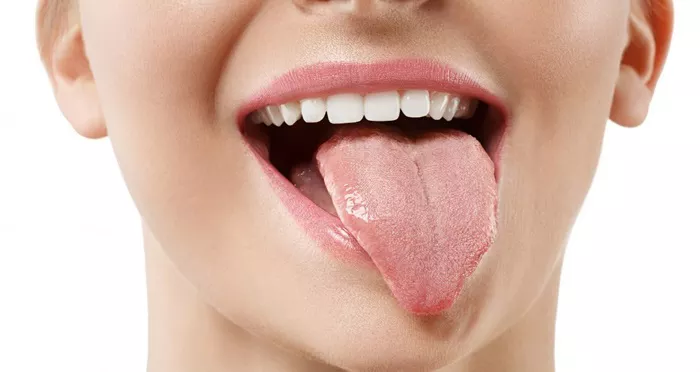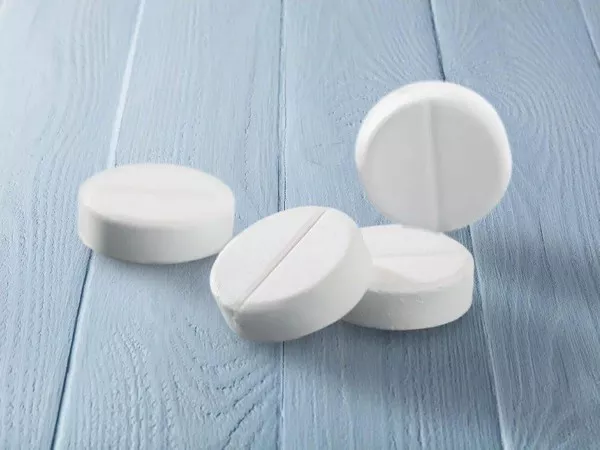The cardiovascular system, consisting of the heart and blood vessels, is the body’s lifeline. It pumps oxygen – rich blood to every cell, supplying nutrients and removing waste products. Maintaining good cardiovascular health is crucial for overall well – being, and exercise is one of the most effective ways to achieve this. In this article, we will explore in detail how different types of exercise benefit the cardiovascular system, from the physiological changes that occur during exercise to the long – term positive impacts on heart function and blood vessel health.
The Basics of the Cardiovascular System
Before delving into the benefits of exercise, it’s essential to understand the basic components of the cardiovascular system. The heart, a muscular organ about the size of a fist, is the central pump. It has four chambers: two atria (the upper chambers) and two ventricles (the lower chambers). The atria receive blood, and the ventricles pump it out.
Blood vessels are the network through which blood travels. Arteries carry oxygen – rich blood away from the heart to the body’s tissues, while veins return oxygen – depleted blood back to the heart. Capillaries, the tiniest blood vessels, connect arteries and veins, allowing for the exchange of nutrients, oxygen, and waste products between the blood and the body’s cells.
Immediate Effects of Exercise on the Cardiovascular System
Increased Heart Rate
When you start exercising, your body’s demand for oxygen and nutrients increases. To meet this demand, the heart begins to beat faster. The heart rate is regulated by the autonomic nervous system. The sympathetic nervous system, often referred to as the “fight – or – flight” system, is activated during exercise. It releases hormones such as adrenaline, which stimulates the heart to increase its rate of contraction.
For example, during a light jog, a person’s heart rate might increase from a resting rate of around 70 beats per minute to 100 – 120 beats per minute. As the intensity of exercise increases, such as during a sprint, the heart rate can reach well over 150 beats per minute in a healthy individual. This increase in heart rate allows the heart to pump more blood per minute, delivering oxygen and nutrients to the working muscles more efficiently.
Increased Stroke Volume
Stroke volume is the amount of blood ejected by the heart with each contraction. During exercise, the heart not only beats faster but also pumps more blood with each beat. This is due to several factors. First, the increased venous return (the amount of blood returning to the heart) during exercise stretches the heart muscle. According to the Frank – Starling law, the more the heart muscle is stretched, the more forcefully it contracts, resulting in a greater stroke volume.
Secondly, the regular exercise – induced adaptations in the heart muscle itself allow it to contract more efficiently. For instance, in a trained athlete, the stroke volume at rest might be around 70 – 80 milliliters, but during intense exercise, it can increase to 110 – 130 milliliters or more. This increase in stroke volume, combined with the increased heart rate, leads to a significant increase in cardiac output (the amount of blood pumped by the heart per minute), which can be several times higher during exercise compared to rest.
Vasodilation
Exercise also causes vasodilation, which is the widening of blood vessels. In the working muscles, the demand for oxygen and nutrients prompts the blood vessels to dilate. This is mainly regulated by the release of local metabolites such as adenosine, carbon dioxide, and hydrogen ions. Vasodilation in the muscles reduces the resistance to blood flow, allowing more blood to reach the muscles.
At the same time, in the non – working organs such as the digestive system, blood vessels constrict to redirect blood to the working muscles. This process of redistributing blood flow is a crucial adaptation during exercise. For example, during a long – distance run, the blood vessels in the legs will dilate significantly, while those in the stomach and intestines will constrict to some extent. This ensures that the muscles involved in running receive an adequate supply of oxygen and nutrients to maintain their function.
Long – Term Effects of Exercise on the Cardiovascular System
Cardiac Hypertrophy
Regular exercise, especially aerobic exercise like running, cycling, or swimming, can lead to cardiac hypertrophy. However, this is a beneficial form of hypertrophy. In contrast to the pathological hypertrophy that occurs in diseases like heart failure, exercise – induced cardiac hypertrophy is an adaptation that improves the heart’s function.
The heart muscle becomes stronger and thicker, especially in the left ventricle, which is responsible for pumping oxygen – rich blood to the entire body. This allows the heart to pump more blood with each contraction more efficiently. For example, in endurance athletes, the left ventricular wall may thicken slightly over time, enabling them to have a higher stroke volume and a lower resting heart rate. This lower resting heart rate is a sign of a more efficient heart, as it doesn’t need to beat as frequently to supply the body with the necessary amount of blood.
Improved Endothelial Function
The endothelium is the inner lining of blood vessels. It plays a crucial role in regulating blood vessel tone, blood clotting, and inflammation. Regular exercise has been shown to improve endothelial function. Exercise stimulates the release of nitric oxide from the endothelial cells. Nitric oxide is a powerful vasodilator, which means it helps to keep the blood vessels relaxed and dilated.
By improving endothelial function, exercise reduces the risk of atherosclerosis, a condition in which plaque builds up in the arteries, narrowing them and restricting blood flow. Atherosclerosis is a major risk factor for heart disease, stroke, and other cardiovascular problems. For example, studies have shown that individuals who engage in regular aerobic exercise have higher levels of nitric oxide in their blood vessels, which helps to maintain healthy blood vessel function.
Lowered Blood Pressure
High blood pressure, or hypertension, is a significant risk factor for cardiovascular disease. Regular exercise can help lower blood pressure. Aerobic exercise, in particular, has been shown to be effective in reducing both systolic (the top number in a blood pressure reading, representing the pressure when the heart contracts) and diastolic (the bottom number, representing the pressure when the heart is at rest between contractions) blood pressure.
The exact mechanisms by which exercise lowers blood pressure are not fully understood, but they likely involve a combination of factors. One is the reduction in peripheral vascular resistance due to improved endothelial function and vasodilation. Another is the decrease in the activity of the sympathetic nervous system, which is overactive in many hypertensive individuals. For example, a person with mild hypertension who starts a regular exercise program, such as walking briskly for 30 minutes a day, may see a significant reduction in their blood pressure over a few months.
Cholesterol and Lipid Profile Improvement
Exercise can also have a positive impact on a person’s cholesterol and lipid profile. It increases the levels of high – density lipoprotein (HDL) cholesterol, often referred to as “good” cholesterol. HDL cholesterol helps to remove low – density lipoprotein (LDL) cholesterol, or “bad” cholesterol, from the blood vessels and transport it back to the liver for processing and elimination.
In addition, exercise may reduce the levels of triglycerides, another type of fat in the blood. High levels of LDL cholesterol and triglycerides, along with low levels of HDL cholesterol, are risk factors for cardiovascular disease. For instance, a person who regularly engages in strength training and aerobic exercise may see an increase in their HDL cholesterol levels and a decrease in their LDL cholesterol and triglyceride levels over time.
Different Types of Exercise and Their Cardiovascular Benefits
Aerobic Exercise
Aerobic exercise, also known as cardio exercise, is one of the most effective ways to improve cardiovascular health. Activities such as running, cycling, swimming, and brisk walking are all forms of aerobic exercise. During aerobic exercise, the body uses oxygen to produce energy, and the heart and lungs work together to supply oxygen to the working muscles.
Aerobic exercise has numerous cardiovascular benefits. It increases the heart’s endurance and strength, allowing it to pump blood more efficiently over long periods. It also improves the body’s ability to use oxygen, as measured by VO₂ max (the maximum amount of oxygen a person can consume during intense exercise). Regular aerobic exercise can lead to a significant increase in VO₂ max, which is associated with better cardiovascular fitness.
For example, a person who starts running three times a week for 30 minutes each time may notice an improvement in their running ability and a decrease in their heart rate during and after exercise. Over time, this can lead to long – term improvements in cardiovascular health, reducing the risk of heart disease, stroke, and other cardiovascular problems.
Strength Training
Strength training, or resistance training, involves using weights, resistance bands, or bodyweight exercises to build muscle strength. While it may not have the same immediate impact on heart rate and cardiac output as aerobic exercise, it still has significant benefits for cardiovascular health.
Strength training can increase muscle mass, which in turn increases the body’s basal metabolic rate. This means that the body burns more calories at rest, helping to maintain a healthy weight. Obesity is a risk factor for cardiovascular disease, and by helping to control weight, strength training indirectly benefits the cardiovascular system.
In addition, strength training can improve blood vessel function. It may increase the production of nitric oxide, similar to aerobic exercise, which helps to keep blood vessels dilated and reduces the risk of atherosclerosis. For example, performing squats, lunges, and bicep curls regularly can contribute to better overall cardiovascular health, along with the obvious benefits of increased muscle strength.
Flexibility and Balance Exercises
Flexibility and balance exercises, such as yoga and tai chi, may not seem directly related to cardiovascular health at first glance. However, they play an important role in maintaining overall physical function, which is beneficial for the cardiovascular system.
These exercises can improve joint mobility, reduce the risk of falls, and enhance body awareness. By keeping the body flexible and balanced, they allow for better movement during daily activities and other forms of exercise. This can help to prevent injuries that could otherwise limit a person’s ability to engage in aerobic or strength training exercises.
Moreover, some forms of yoga and tai chi involve slow, controlled breathing, which can have a calming effect on the nervous system. This can help to reduce stress and blood pressure, both of which are important for cardiovascular health. For example, practicing Hatha yoga regularly may help a person relax and manage stress, which in turn can have a positive impact on their cardiovascular system.
Recommendations for Exercise to Improve Cardiovascular Health
Frequency
For most healthy adults, it is recommended to engage in at least 150 minutes of moderate – intensity aerobic exercise per week. This can be broken down into 30 – minute sessions on five days of the week. For example, brisk walking, cycling at a moderate pace, or swimming laps can all be considered moderate – intensity aerobic exercises.
If you prefer high – intensity aerobic exercise, such as running or cycling at a fast pace, 75 minutes per week is recommended. This can be spread out over three days, with each session lasting about 25 minutes.
In addition to aerobic exercise, strength training should be included at least two days a week. This can involve exercises for all major muscle groups, such as the legs, chest, back, shoulders, and arms.
Intensity
The intensity of exercise is important for achieving cardiovascular benefits. Moderate – intensity aerobic exercise is defined as an activity that raises the heart rate to about 50 – 70% of your maximum heart rate. Your maximum heart rate can be estimated by subtracting your age from 220. For example, for a 40 – year – old person, the maximum heart rate is 220 – 40 = 180 beats per minute. Moderate – intensity exercise for this person would be an activity that raises the heart rate to 90 – 126 beats per minute.
High – intensity aerobic exercise, on the other hand, raises the heart rate to 70 – 85% of the maximum heart rate. When it comes to strength training, the intensity can be adjusted by the amount of weight used, the number of repetitions, and the number of sets. Beginners should start with light weights and gradually increase the intensity as their strength improves.
Duration
As mentioned earlier, the recommended duration for moderate – intensity aerobic exercise is 150 minutes per week, which can be divided into 30 – minute sessions. For high – intensity aerobic exercise, 75 minutes per week, or 25 – minute sessions, is recommended.
For strength training, each session should typically last 20 – 30 minutes, including warm – up and cool – down. This allows enough time to perform exercises for all major muscle groups, usually 2 – 3 sets of 8 – 12 repetitions for each exercise.
Progression
It’s important to progress gradually when starting an exercise program. If you are new to exercise, begin with low – intensity activities and gradually increase the intensity, duration, and frequency over time. This helps to prevent injuries and allows your body to adapt to the increased physical demands.
For example, if you are starting to run, begin with short intervals of running and walking, gradually increasing the running time and decreasing the walking time. In strength training, start with light weights and gradually add more weight as your muscles get stronger.
Conclusion
Exercise is a powerful tool for improving cardiovascular health. From the immediate effects of increased heart rate, stroke volume, and vasodilation during exercise to the long – term benefits of cardiac hypertrophy, improved endothelial function, lowered blood pressure, and better cholesterol profiles, the positive impacts on the cardiovascular system are numerous.
By incorporating a variety of exercises, including aerobic, strength, flexibility, and balance exercises, into your routine and following the recommended guidelines for frequency, intensity, duration, and progression, you can significantly reduce your risk of cardiovascular disease and improve your overall quality of life. Whether you are young and healthy or have existing cardiovascular problems, exercise can play a crucial role in maintaining and enhancing your cardiovascular health. So, lace up your shoes, pick up those weights, or roll out your yoga mat, and start reaping the benefits of exercise for your heart today.
Related topics:
How Does Exercise Help Prevent Circulatory System Disorders?



































